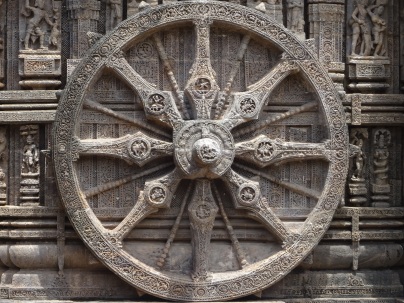There are three young men and their dog-Montmorency.They are all idling, smoking tobacco, except the dog, of course, and discussing how bad they are- “bad” from a medical point of view.So they decide to go on a long boating trip to heal themselves.That’s the plot of this classic novel, broadly.
Jerome K Jerome, the author of this tale, referred to as “J” in the story, is quite an amusing narrator.In the opening chapter of the book,he tells about discovering in a medical journal, a liver ailment, whose one of the symptoms is, ‘a general disinclination to work of any kind’. He gets convinced he has this disease- since childhood.And he gets aggrieved to recall his old times when everyone thrashed him for being lazy while not realizing it was because of the liver!
From my earliest infancy I have been a martyr to it. As a boy, the disease hardly ever left me for a day. They did not know, then, that it was my liver. Medical science was in a far less advanced state than now, and they used to put it down to laziness
Similarly, each of them discovers having some or the other obscure ailments and then come up with the notion of going on a weekend boating trip up the river Thames, to ‘restore their mental equilibrium’.
What we want is rest, said Harris.
Rest and a complete change, said George. The overstrain upon our brains has produced a general depression throughout the system. Change of scene, and absence of the necessity for thought, will restore the mental equilibrium.
Their trip starts from Kingston and continues till Oxford- from where they take a return course.The story was intended to be a travel narrative and J tells elaborately about the places they pass through, as they row their boats.
However, the more interesting aspect is the comic narrative of events. J describes the humor in their planning and preparation of the trip and subsequently how they face the hard and good times later in the journey.Additionally, Jerome shares some charming philosophical thoughts describing the life and the beauty of nature.
We are creatures of the sun, we men and women. We love light and life. That is why we crowd into the towns and cities, and the country grows more and more deserted every year. In the sunlight in the daytime, when Nature is alive and busy all around us, we like the open hill-sides and the deep woods well enough: but in the night, when our Mother Earth has gone to sleep, and left us waking, oh! the world seems so lonesome, and we get frightened, like children in a silent house. Then we sit and sob, and long for the gas-lit streets, and the sound of human voices, and the answering throb of human life. We feel so helpless and so little in the great stillness, when the dark trees rustle in the night-wind. There are so many ghosts about, and their silent sighs make us feel so sad. Let us gather together in the great cities, and light huge bonfires of a million gas-jets, and shout and sing together, and feel brave.
But his mind keeps rambling as he narrates.You must have a friend who is talkative and tells stories starting with-“You know once what happened..” And then gets everyone around him involved in his funny narrative. J is a similar kind of person.By the time you would have finished the book you would have read many amusing incidents which J recollects from the past.
This book is delightful! A book to be savored!An absolute Classic! The book will keep you smiling all the time.I wanted to read the book since a long time because I had already read parts of the book in following ways-
1.An excerpt from this book was titled as “Packing for a Picnic” and was included as a chapter in our English Course Book during Middle School.It was an amusing narrative of how packing made J scared because he always forgot to pack his toothbrush.
2.I found another excerpt included in “The Greatest Literary works of All Time”, a book I had purchased some time ago.This particular excerpt was about J’s uncle Podger, who always boasted that he could do a task without anyone’s help but instead would make the whole house go mad because he will keep messing up the things.
So, I had a fairly nice impression of the book and wanted to read the full of it! Thankfully I read it the last month and was glad to have added it to my “Finished Reading” list.I am grateful to Mliae for hosting this lovely challenge which has ensured that I will be finishing at least one book every month.
If you want to be a part of it, do visit her blog and get acquainted with the challenge.














